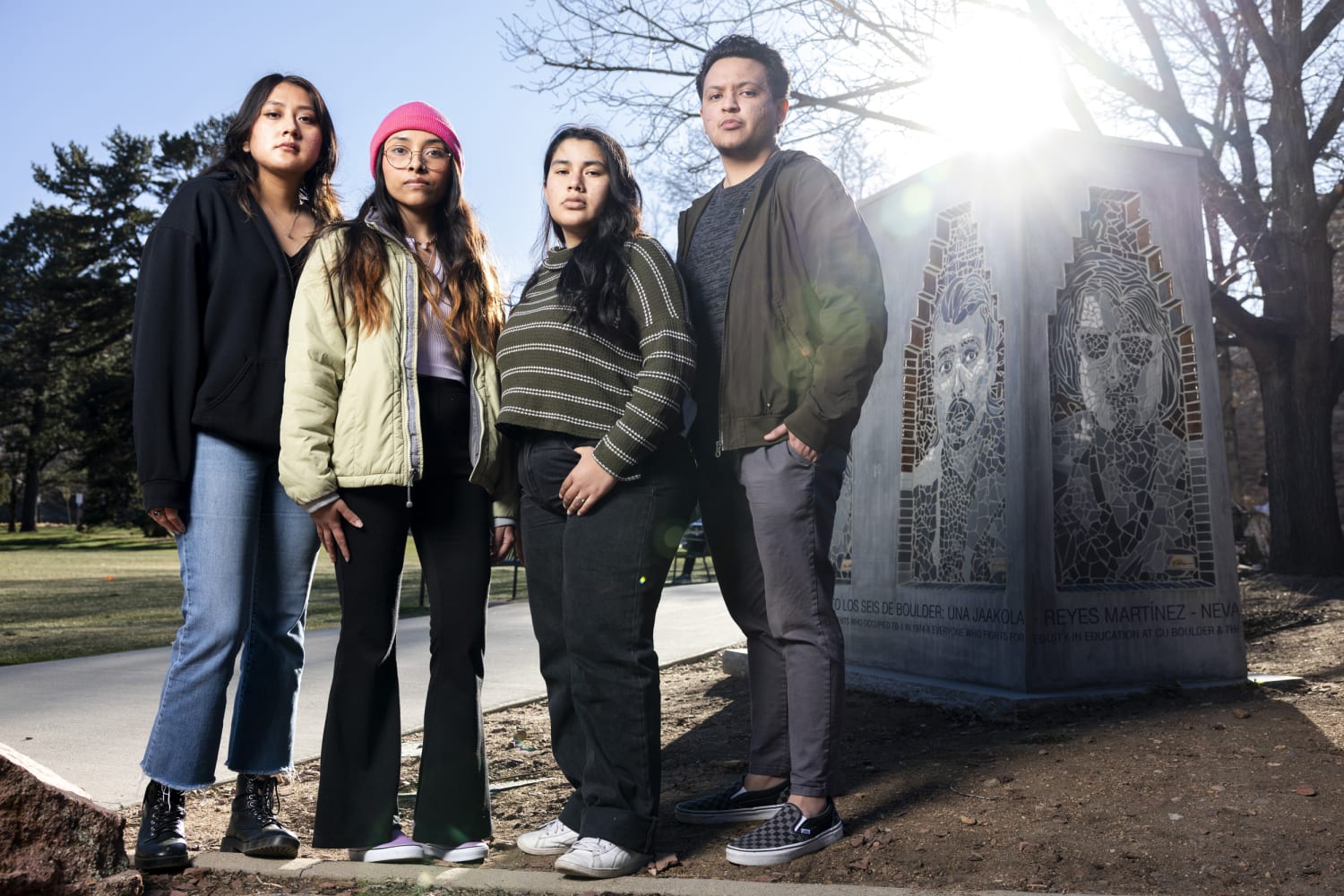The following report is part of a collaboration between NBCNews.com and The Hechinger Report focused on examining Black and Latino enrollment in flagship universities.
BOULDER, Colo. — In high school, Carlos Granillo was a standout honor student and multisport athlete whose hard work earned him admission to the state’s flagship university, the University of Colorado Boulder.
Coming from a high school in Aurora that was 60 percent to 70 percent Hispanic, he figured he’d find a good number of Latinos on campus. That didn’t happen, said Granillo, 22, who graduated from CU Boulder in May with a civil engineering degree.
“Once in a while I’d see one or two, a couple together,” Granillo said. “They would be on their own.”
CU Boulder has one of the nation’s widest gaps between undergraduate Latinos attending college for the first time and the state’s share of Latino high school graduates, an analysis of federal data by The Hechinger Report and NBC News shows.
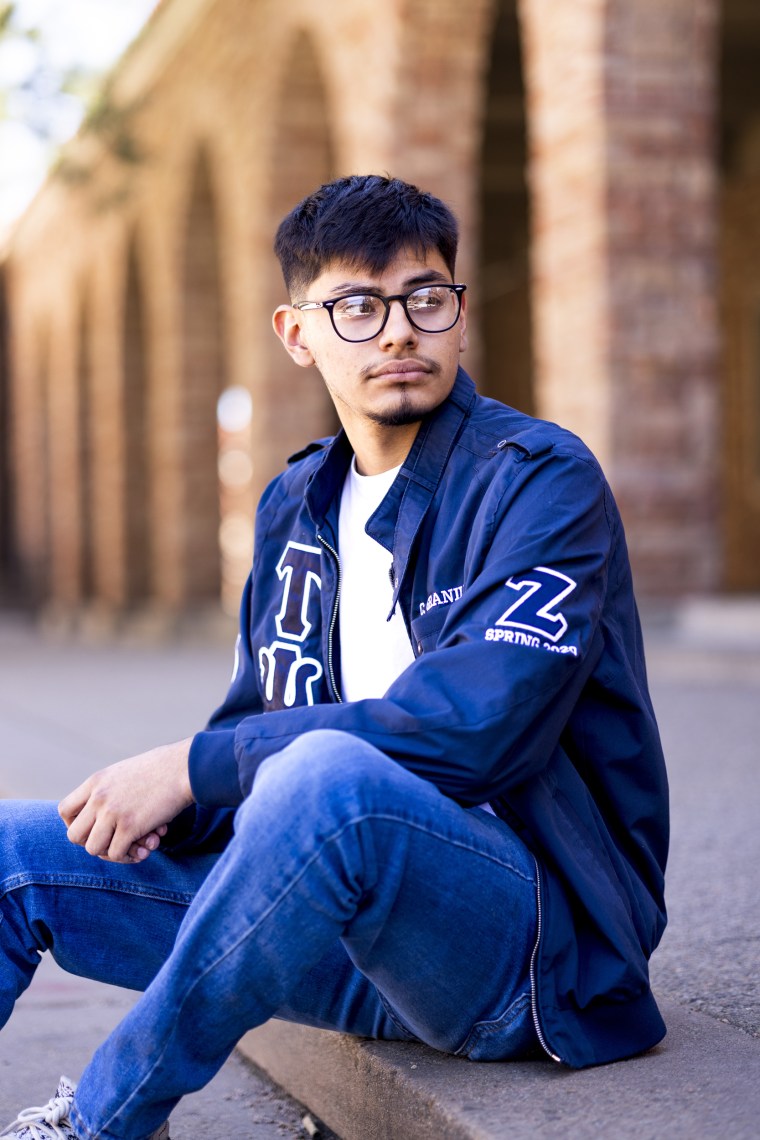
In 2020, 14 percent of CU Boulder’s full-time freshmen — including from out of state — were Hispanic, while 31 percent of all of Colorado’s high school graduates were that year, according to the analysis. That 17-point gap was slightly lower than in 2013, when 11 percent of the university’s freshmen were Latino and 29 percent of the state’s high school graduates were Latino, an 18-point difference.
CU Boulder’s gap in Latino enrollment was not the widest among flagship universities in the U.S. in 2020: It was behind the University of California Berkeley (a 38-point gap), the University of Texas at Austin (22 points) and the University of Nevada Reno (18 points).
In fact, there are 10 flagship universities where the gap between the percentage of Latino students who graduated from public high schools in that state in 2020 and Latino freshman enrollment is 10 percentage points or more.
But CU Boulder is remarkable because Colorado is considered one of the countries’ most educated states. It also has had a more established, Hispanic population than most states: Almost 8 in 10 (79%) of the state’s Latinos were U.S.-born, compared to Texas (72%), Nevada (64%) and California (63%), according to a Pew Research Center analysis.
“The University of Colorado at Boulder, in part, doesn’t want to acknowledge that we’re in the Southwest and there’s this whole community here,” said Arturo Aldama, chair of ethnic studies at CU Boulder, “and the notion that we didn’t cross the border — the border crossed us — is as real here as in Tejas.”
Flagships are generally considered the best, most rigorous and most selective public universities, and are “core to educating people in the state,” said Deborah Santiago, co-founder and CEO of Excelencia in Education, a nonprofit focused on boosting Latino college completion.
“Especially in the last five to six years,” said Santiago, “there has been a lot of push to say public investment in these flagships means that you need to be serving the public that is investing in these institutions with their tax dollars.”
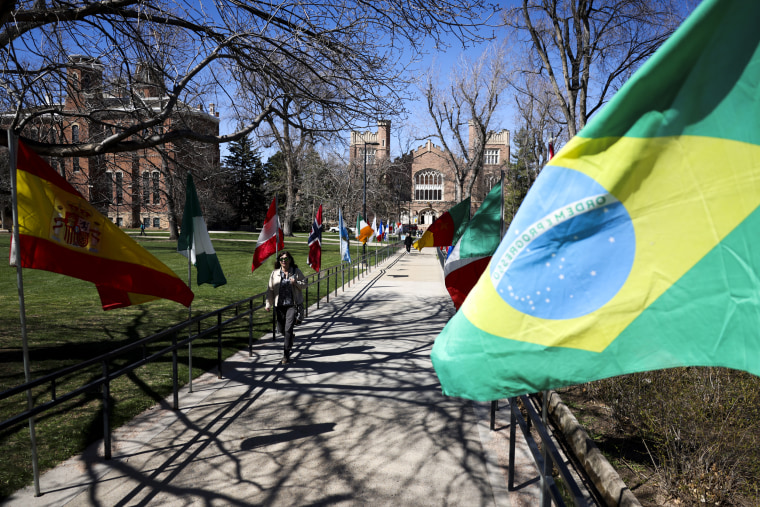
CU Boulder’s own data show Latinos were 13.7 percent of its first-time undergraduates in fall 2021. Latinos were 31 percent of the state’s high school graduates that year.
CU Boulder told NBC News the university did not have anyone available to discuss Latino enrollment and declined follow-up requests. In a statement, Deborah Méndez Wilson, director of strategic communications for diversity, equity and inclusion, said the university “continues to make meaningful progress toward closing the statewide higher education equity gap for students who identify as Hispanic or Latino.”
According to the university, it increased the share of Latino in-state incoming-class students from 11.8% in 2012 to 16.9% in 2021. In the last decade, Latino in-state undergraduate enrollment increased over 57 percent and in-state Latino admissions more than 180 percent.
“We admit and make every effort to recruit all students who are academically qualified,” according to the state’s admissions’ guidelines, the statement said.
But CU Boulder is doing worse than the data shows, according to Excelencia’s Santiago, when one takes into account the growth of the state’s Hispanic population. The state’s Hispanic preschool-12 student population grew 12.38 percent from 2011 to 2021.
Educators, students, community advocates and long-time Coloradans said a confluence of issues contribute to CU Boulder’s low enrollment of in-state Latino graduates.
They point to Colorado’s historic discrimination against Mexican Americans. Also at play is the state’s slashing of funding for public universities, which CU Boulder, in turn, makes up for with out-of-state students who pay higher tuition. Some blame poor preparation of students before college.
But they also said CU Boulder isn’t doing enough to engage Latino students or to provide enough financial and other assistance to bring more Latinos to campus.
“Historically, CU Boulder has not been a welcoming environment for Latinos,” said Federico Peña, former transportation and energy secretary in the Clinton administration and a former Denver mayor. “I would say that today it probably still is not a very welcoming environment for Latinos.”
‘No lack’ of eligible Latinos, but cost is an issue
There is no lack of academically qualified Latinos in the state, said José Guardiola, dean of student services and post-secondary at West High School, the oldest high school in Denver. Most just don’t have the money for the flagship, he said.
Of his top 10 students last school year, “none of them are going to Boulder,” he said. Many met the academic eligibility, but for most it came down to money, he said.
“I think CU Boulder is missing the boat with some amazing Latino kids,” Guardiola said. His students often choose Colorado State University (CSU) in Fort Collins, which offers a $2,000 grant for students who are the first generation of their family to attend college. Others were accepted and were planning to attend the state’s prestigious engineering school, Colorado School of Mines, as well as Colorado Mesa University and Metro State University.
Generally, his students applying to CSU get financial aid — packages of federal, state and local money given or loaned based on need and merit — of $18,000 to $21,000, he said.
His students who apply to CU Boulder usually find themselves short about $12,000 after figuring in financial aid, Guardiola said.
UC-Boulder’s costs vary by area of study for first-year and transfer students, from $30,452 to $35,924 for in-state residents who live on campus. At CSU, the cost is about $26,547.
“I think it comes down to the administration, how they use those (financial aid) bucks,” Guardiola said. “CU, with the money it has, should have every Coloradan that wants to go there have a great financial aid package.”
Not just cost
For other students, cost is not the only factor.
Leslie Andrade Magaña, 21, a third-year student at Colorado State University, took college level courses from her sophomore through senior year at her Denver high school. She graduated with a 4.3 GPA.
Andrade said she never considered attending CU Boulder.
“It’s a very white institution and I just knew that that wasn’t something I was looking for,” Andrade said.
CSU’s diversity wasn’t as high as she’d like either — 14 percent of CSU students are Hispanic, the same as CU Boulder — “but I just felt a lot more comfortable,” Andrade said.
Many Latinos in Denver, which is 32 percent Hispanic, opt for attending Metropolitan State University of Denver, one of Colorado’s four-year Hispanic Serving Institutions. At least a quarter of its student population is Latino. CU-Denver had reached HSI status but lost it after its share of Latino undergraduates dropped below 25 percent in the pandemic.
MSU-Denver costs far less than other state schools, about $11,481 for tuition fees and books for the nonresidential campus. But at 31%, the six-year graduation rate for MSU’s Latino students lags far behind CU Boulder, where it was 63 %. CSU’s rate is 59%.
A longstanding fight for equity
Mexican Americans and others have confronted CU Boulder in the past over low Latino enrollment and representation on campus.
On the CU Boulder campus stands a 4-foot-7 memorial to “Los Seis,” six activists, including CU Boulder students, who were killed in two off-campus car bombings in 1974; the killings were never solved. The activists were affiliated with United Mexican American Students (UMAS), which had been demanding rights for Chicano students, including parity in enrollment and financial assistance.
Mateo Vela, who graduated from CU Boulder in May, led protests to keep the memorial from being shuffled to a campus building’s basement. The memorial is a reminder of the equity that Los Seis sought and that the university has yet to achieve, Vela said.
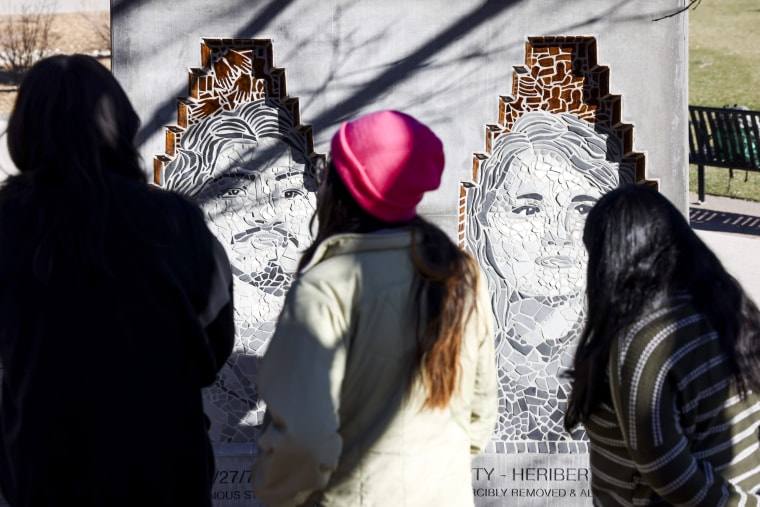
“CU Boulder has a reputation for being a very white school, and honestly, that reputation, coupled with a lot of systemic and financial factors, is why a lot of students of color choose to go to other universities,” Vela said.
CU Boulder has tried to address barriers to enrollment. CU’s spokeswoman said the flagship is using new federal funding for outreach in rural areas that are predominantly Latino and removed a writing requirement on applications. The university announced plans in May 2021 to invest $25 million over five years in diversity.
In addition, the school made ACT and SAT test scores optional for 2021 high school graduates, after Colorado Gov. Jared Polis signed a law allowing the option as a response to the pandemic. The tests have been criticized as racially biased and a barrier for low-income youth.
‘Not a strong footprint’
At the end of a hall at Abraham Lincoln High School in heavily Latino southwest Denver, students filled up a classroom that is dubbed the “Future Center,” focused on college enrollment.
The room becomes noisy as a group of students, who speak English, rib each other in Spanish. Joselyn Loya, the center’s adviser, floats between both languages as she queries individual students about appointments, applications and progress on shaping their futures.
According to Principal Antonio Esquibel, there has been a “lack of partnership with CU Boulder” for the high school and the Denver district.
“I don’t know if the typical Denver student is who they want to target, I don’t know,” Esquibel said of CU Boulder. “But there’s not a strong footprint here. I think there’s some other colleges and universities in Colorado that have made more impact, that have reached out more to students of color in particular, and Latinos specifically.”
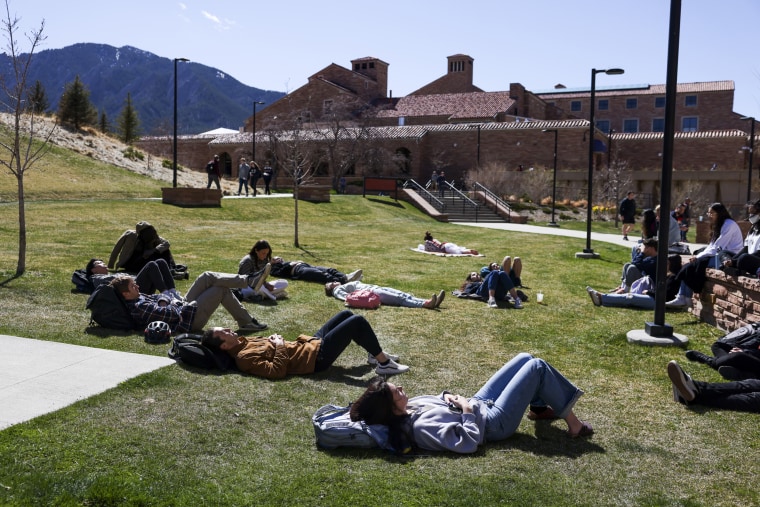
Loya said students she assists don’t talk much about attending CU Boulder. When students have visited the campus, they don’t hear much about resources CU Boulder has for underrepresented students, she said.
Jessica Gutierrez, 17, a Lincoln high school student, met the eligibility requirements for CU Boulder, Loya said. But she wasn’t planning to apply. The same was true for two other students who spoke to NBC News.
Based on conversations with friends, “it’s not a school I’d really be interested in,” Gutierrez said last spring.
A Latino alum on a mission
There are a number of pre-collegiate government and university programs established to funnel more young people to higher education.
CU Boulder reported that its Pre Collegiate Development Program actively recruited first generation students from 25 middle schools and 18 high schools. Seventy-two percent, 510, of the middle and high school students enrolled in the program for 2020-21 were Latino.
The results of the university’s outreach weren’t coming fast enough for Jason Romero. The 2012 CU Boulder graduate, now a teacher and historian, was preparing to bring 52 more students to CU Boulder campus last summer through Aquetza, a recruitment program he and other Latino students created and named after the Indigenous Nahuatl word meaning “to lift your chin up,” he said.
The decade-old program has brought high school students of all levels to campus — except during the pandemic — to live in dorms, attend various sessions on topics such as Chicano culture and history, and how to do research.
Vela and three other CU Boulder students who spoke with NBC News first learned about the campus through the Aquetza program.
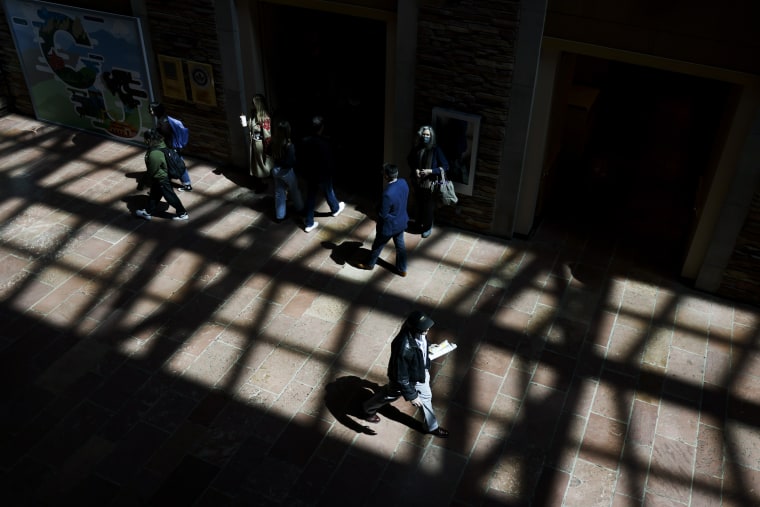
Aquetza grew out of Romero’s own frustration with CU Boulder’s inadequate recruitment in his hometown, Pueblo, Colorado, after he had taken enough college courses in high school to graduate with an associate’s degree. But it was Romero who reached out to Boulder, not the other way around.
Before graduating, he and other members of the Latino student group UMAS y MEXA decided they had to do the recruiting themselves. They modeled Aquetza after summer bridge programs created by previous students, including “Los Seis.”
Aquetza is now an official CU Boulder program, with some funding from the university, although it’s mostly supported by contributions and its staff is voluntary.
“One of our big focuses when we decided to create Aquetza was to go into communities that we knew the university wasn’t doing as good of a job recruiting as it could have been,” Romero said. “All of us went back to our schools to try to get people to come.”
Granillo’s time at CU Boulder ended in May, but before leaving he did his part to bring more Latino students to the university. He did so as a campus guide, through his Latino fraternity and through a nonprofit, Inspire, that brings students from urban areas to campus.
“It is our job,” Granillo said of Latinos, “to go to these places.”
Follow NBC Latino on Facebook, Twitter and Instagram.
Source: | This article originally belongs to Nbcnews.com


